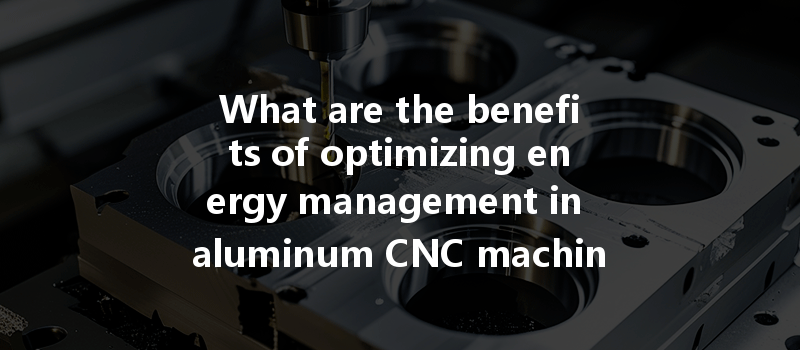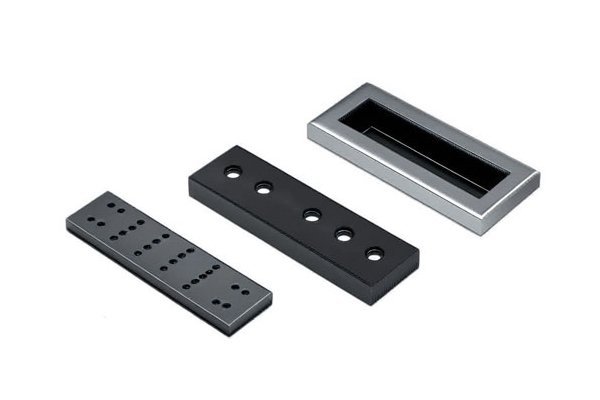*
Did you know that manufacturing processes, including CNC machining, account for nearly 30% of the total energy consumption in the industrial sector? As the global community grows increasingly aware of climate change and sustainability, manufacturers face mounting pressure to reduce their carbon footprint. Among the various materials processed, aluminum holds a prominent position due to its lightweight and versatile applications. This blog explores how optimizing energy management within aluminum CNC machining can lead to significant sustainability improvements and cost reductions while enhancing overall operational efficiency.
Understanding CNC Machining and Its Energy Demands
CNC (Computer Numerical Control) machining automates the control of machine tools through software. While this technology revolutionized manufacturing by providing precision and repeatability, it is not without its energy demands. Energy consumption in aluminum CNC machining varies based on several factors, including the type of machinery, tooling, and operational practices employed.
The energy consumed during machining is largely a product of:
Recognizing these energy expenditure sources is crucial for manufacturers keen on implementing effective optimization strategies.
Strategies for Optimizing Energy Management in Aluminum CNC Machining
A comprehensive energy audit encompasses evaluating all machinery, tools, and processes to measure energy consumption accurately. By identifying energy hot spots and inefficiencies, manufacturers can prioritize improvements that will yield the most significant savings.
Investing in modern machinery designed for energy efficiency can lead to substantial long-term savings. Newer CNC machines often come equipped with advanced features that optimize power consumption, minimize waste, and enhance precision—a win-win for productivity and the environment.
The integration of IoT (Internet of Things) technology into CNC machining processes allows for real-time monitoring and data analysis, providing insights into energy consumption patterns. Manufacturers can leverage this data to make informed decisions about machine operation and equipment scheduling, reducing energy waste.

The right tools can significantly impact energy consumption. Choosing high-quality, optimized tooling designed for aluminum machining minimizes resistance, improves cutting efficiency, and prolongs tool life. Regular inspection and maintenance of these tools are essential to ensure they remain effective.
Employing modern cutting techniques like high-speed machining, dry machining, or cryogenic machining can reduce energy consumption while improving machining quality. These methods not only help lower power requirements but also generate less heat, preserving both tools and materials.
Optimize coolant usage by utilizing advanced cooling methods such as minimum quantity lubrication (MQL) systems or applying advanced coolant formulations that enhance thermal stability and fatigue resistance. These strategies reduce the need for excessive coolant flow and lower energy consumption.
Minimizing machine idling, setup, and non-productive times within the manufacturing process is crucial. Streamlining transitions between different machining tasks, investing in training for operators to reduce setup times, and employing scheduling strategies can all contribute to improved energy efficiency.
Educating employees about energy management strategies plays a vital role in creating a culture that emphasizes sustainability and efficiency. Training programs should include best practices for machine operation, tooling care, and energy conservation techniques.
Once implemented, it is essential to measure and monitor the effects of the optimization strategies over time. Regular assessments will demonstrate progress and motivate further improvements. By leveraging energy management software, manufacturers can track consumption, establish baselines, and continuously optimize their processes.
In addition to focusing on energy consumption, manufacturers should consider broader sustainability practices such as recycling machined aluminum waste, sourcing materials responsibly, and investing in renewable energy sources to power operations.
*
Optimizing energy management in aluminum CNC machining is not just a matter of improving profitability; it is crucial for sustainability in manufacturing. With energy consumption on the rise, manufacturers must adopt proactive strategies that reduce their environmental impact while also fostering economic growth.
The technologies and methods discussed in this blog—energy audits, modern machinery, smart technologies, optimized tooling, improved cooling techniques, and enhanced employee training—provide a comprehensive toolkit for manufacturers looking to optimize their aluminum CNC machining processes.
With global competition and environmental sustainability trends at the forefront, taking steps to improve energy management is more critical than ever. By investing in energy-efficient practices, manufacturers can foster a more sustainable future while ensuring their own relevance and success in the marketplace. As you consider the various ways your CNC machining practices can lead to better energy management and sustainability, remember that small changes today can lead to profound results for tomorrow.






